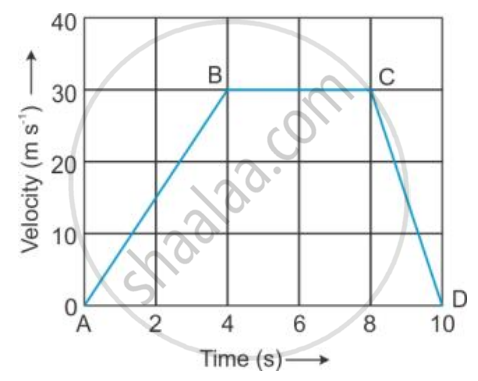Advertisements
Advertisements
Question
A body projected vertically up with a velocity of 10 m/s reaches a height of 20 m. If it is projected with a velocity of 20 m/s, then the maximum height reached by the body is:
Options
20 m
10 m
80 m
40 m
Solution
80 m
Explanation:
Initial velocity = u = 10 m/s
Height = Distance = S = 20 m
At highest point, Final velocity = v = 0
Acceleration = (a) = ?
Case − I
v2 − u2 = 2aS
(0)2 − (10)2 = 2a (20)
a = `-100/40` = −2.5 ms−2
Case – II
u = 20 m/s; v = 0
a = −2.5 ms−2; S = h /
v2 − u2 = 2aS
(0)2 − (20)2 = 2(−2.5)h
h = `400/5` = 80 m
APPEARS IN
RELATED QUESTIONS
Bus X travels a distance of 360 km in 5 hours whereas bus Y travels a distance of 476 km in 7 hours. Which
bus travels faster ?
Write the formula for acceleration. Give the meaning of each symbol which occurs in it.
A motorcyclist drives from place A to B with a uniform speed of 30 km h-1 and returns from place B to A with a uniform speed of 20 km h-1. Find his average speed.
A motorcyclist starts from rest and reaches a speed of 6 m/s after travelling with uniform acceleration for 3 s. What is his acceleration ?
The graph given alongside shows how the speed of a car changes with time:

(i) What is the initial speed of the car ?
(ii) What is the maximum speed attained by the car ?
(iii) Which part of the graph shows zero acceleration ?
(iv) Which part of the graph shows varying retardation ?
(v) Find the distance travelled in first 8 hours.
The speed of a car is 72 km h-1. Express it in m s-1.
Express 15 m s-1 in km h-1.
The velocity-time graph of a moving body is given below in Figure

Displacement in each part AB, BC and CD.
Define speed of a body.
